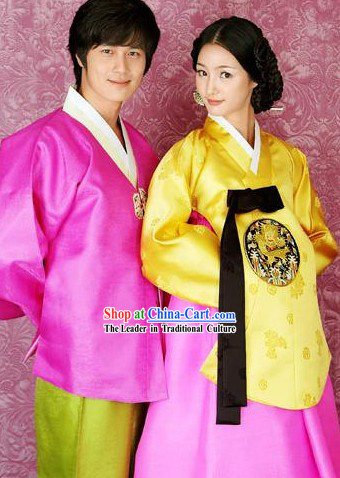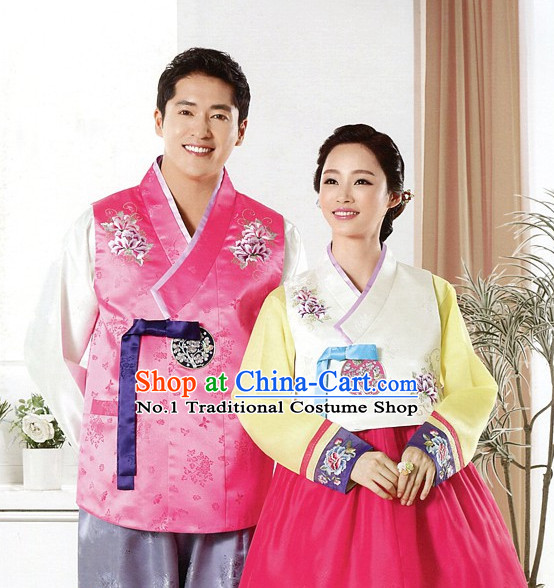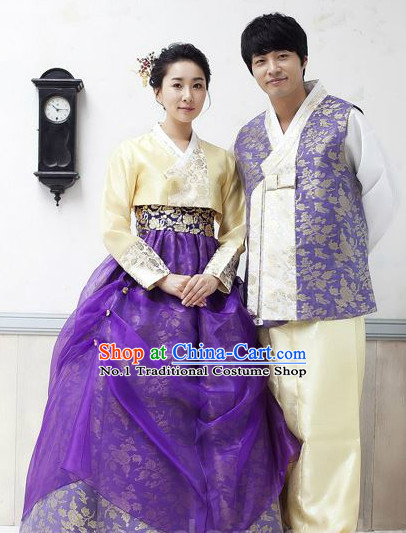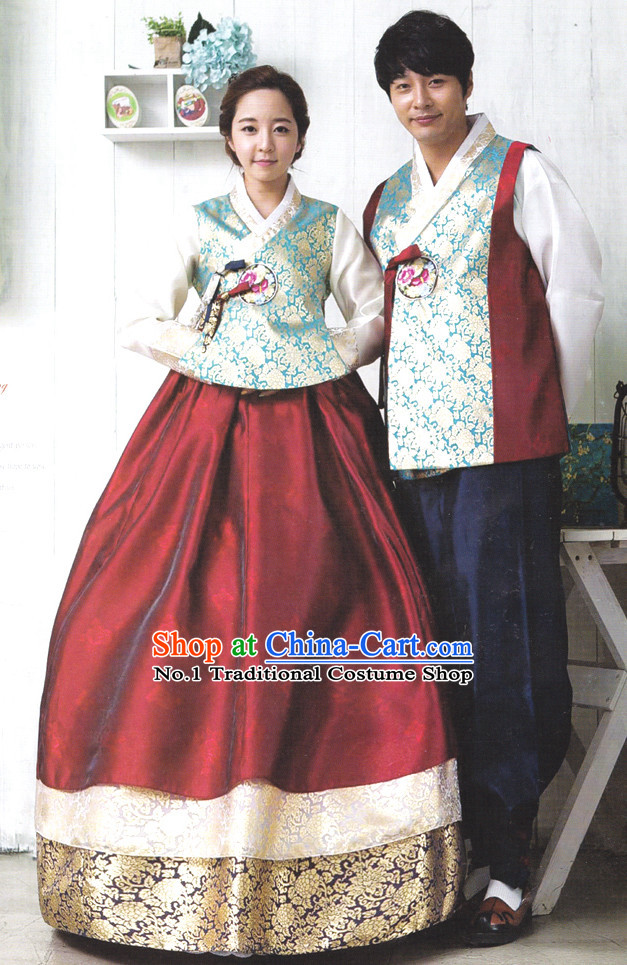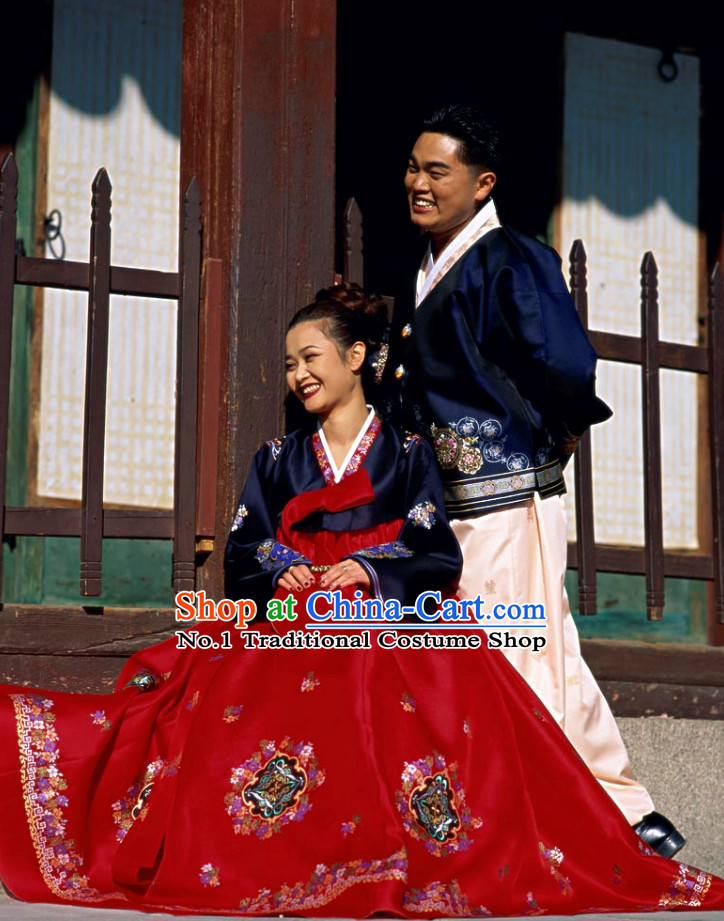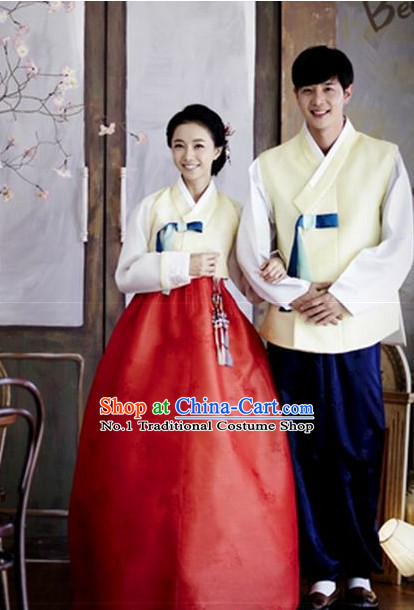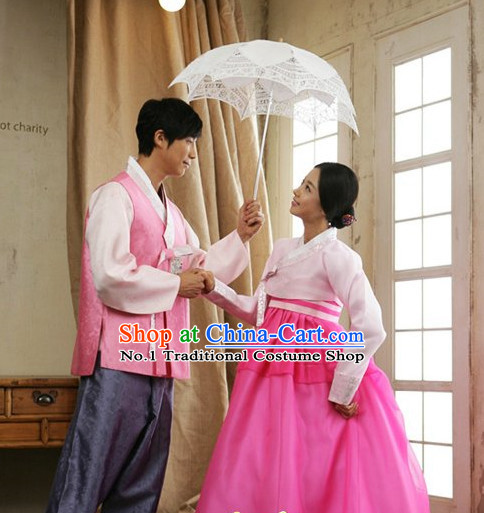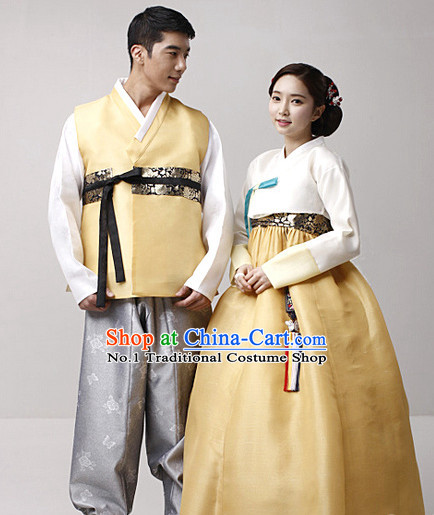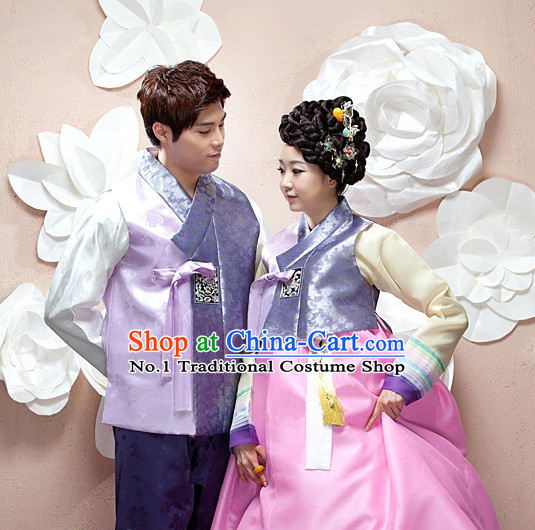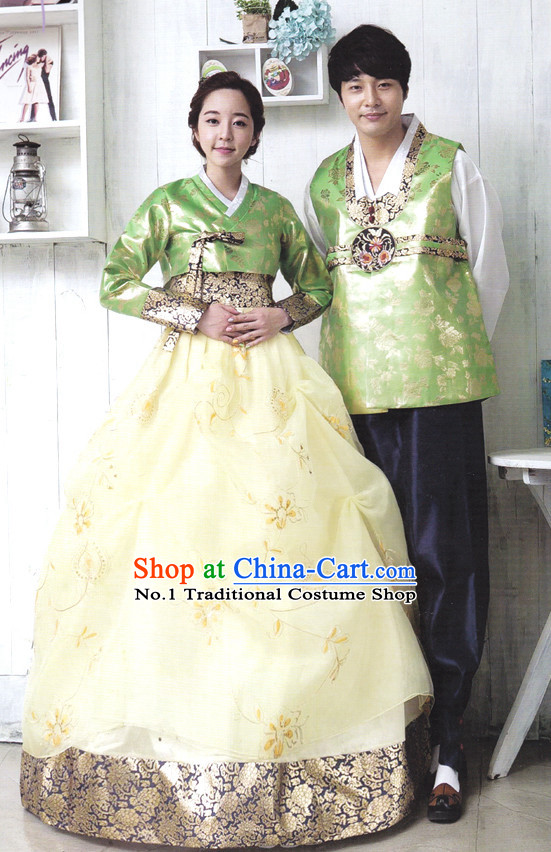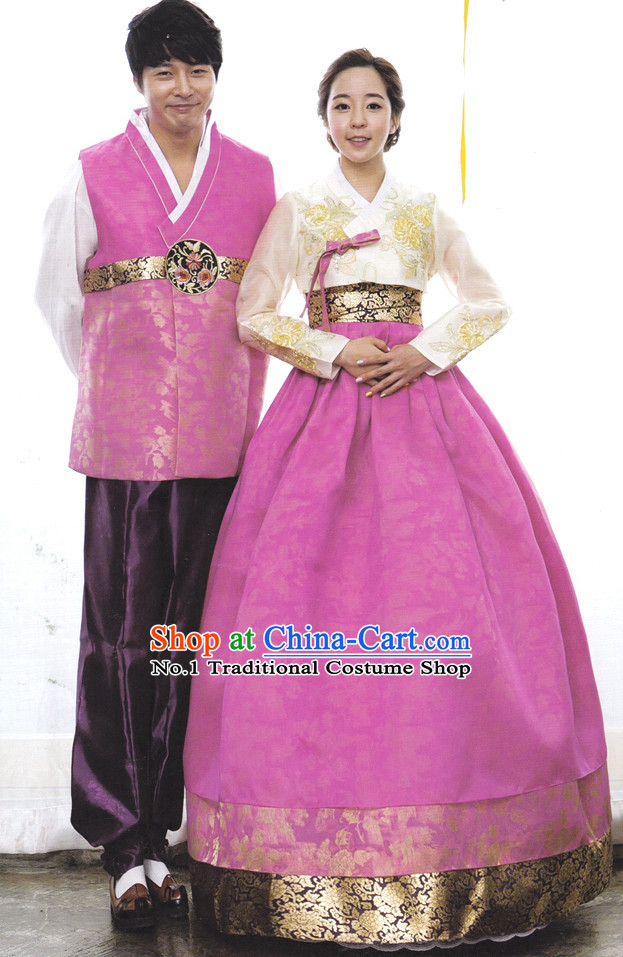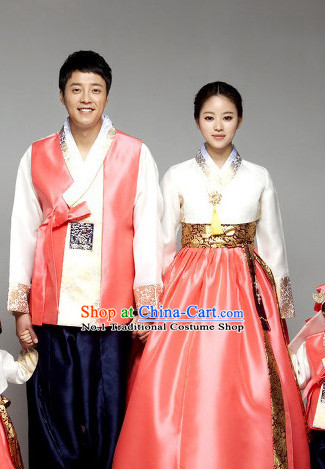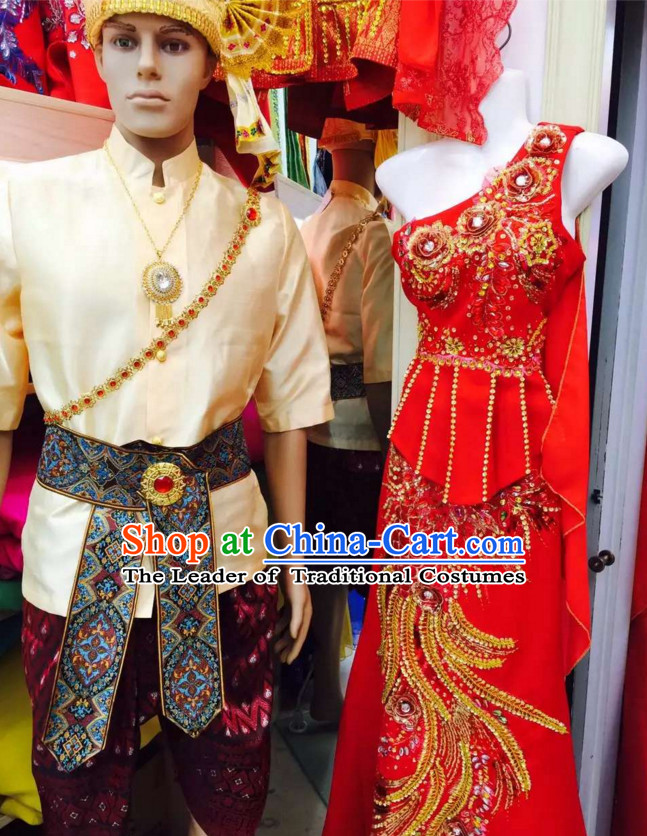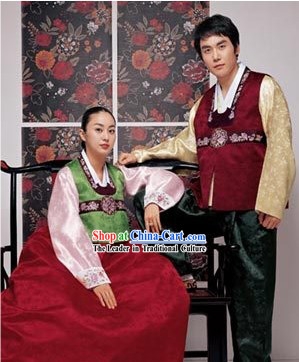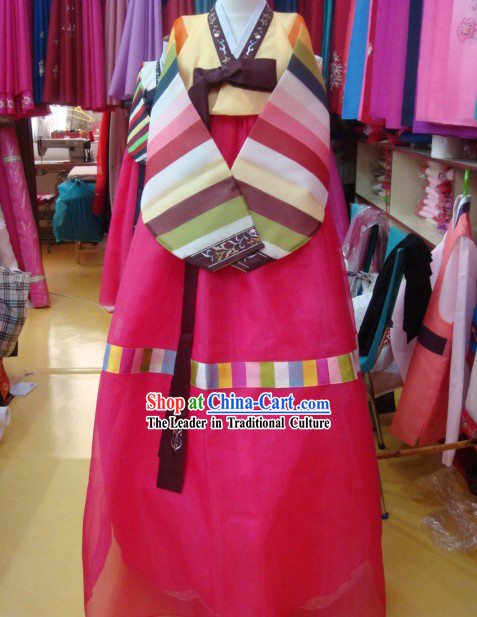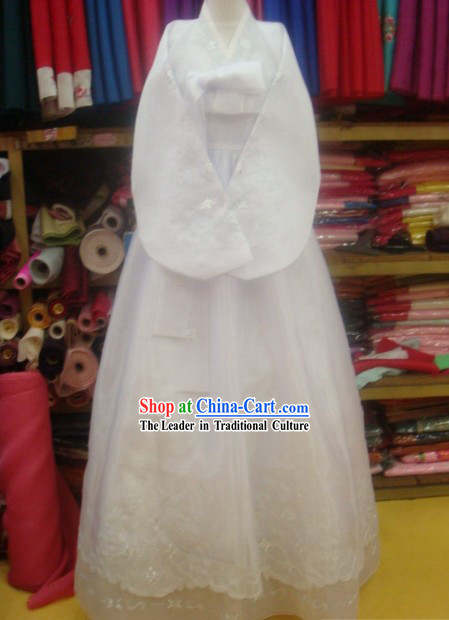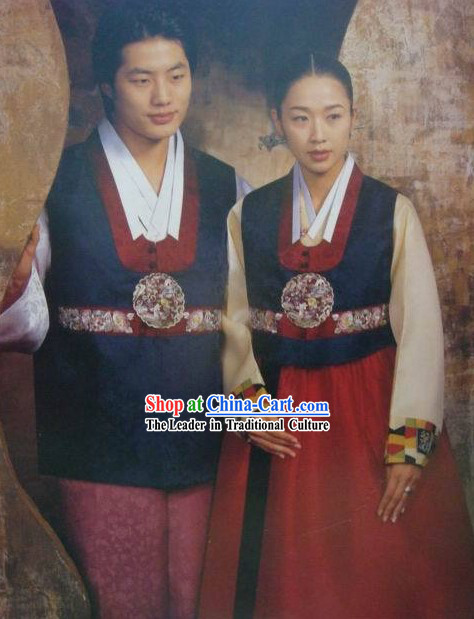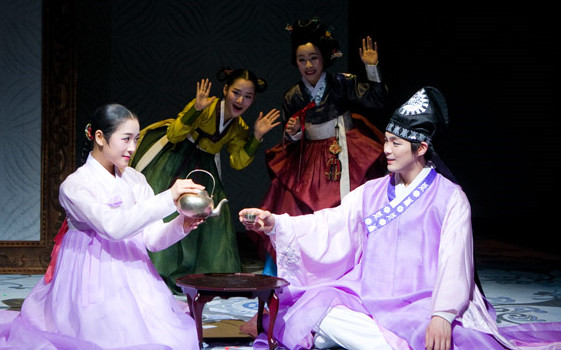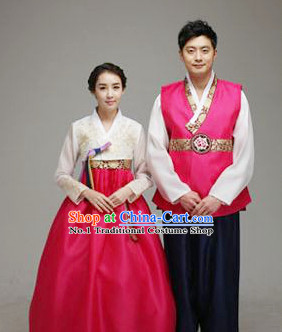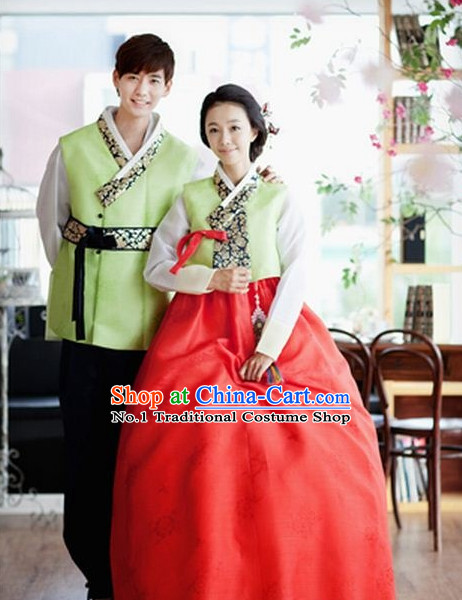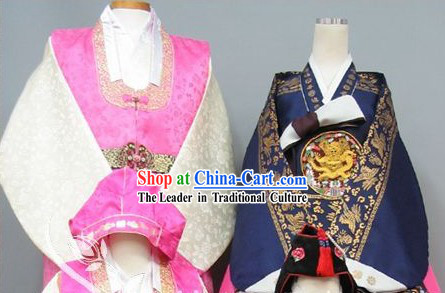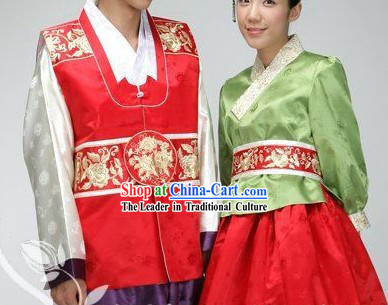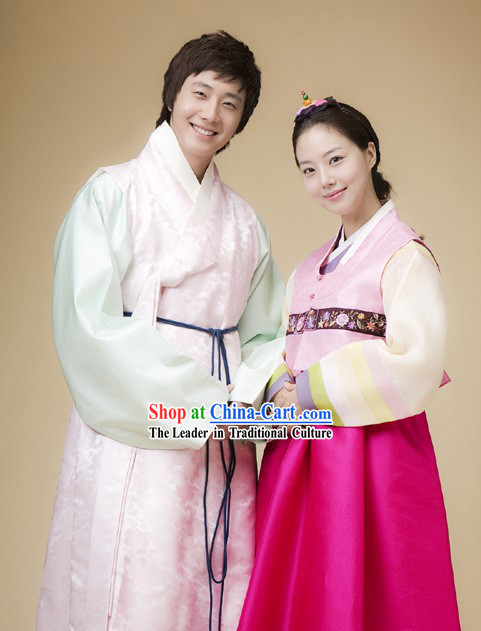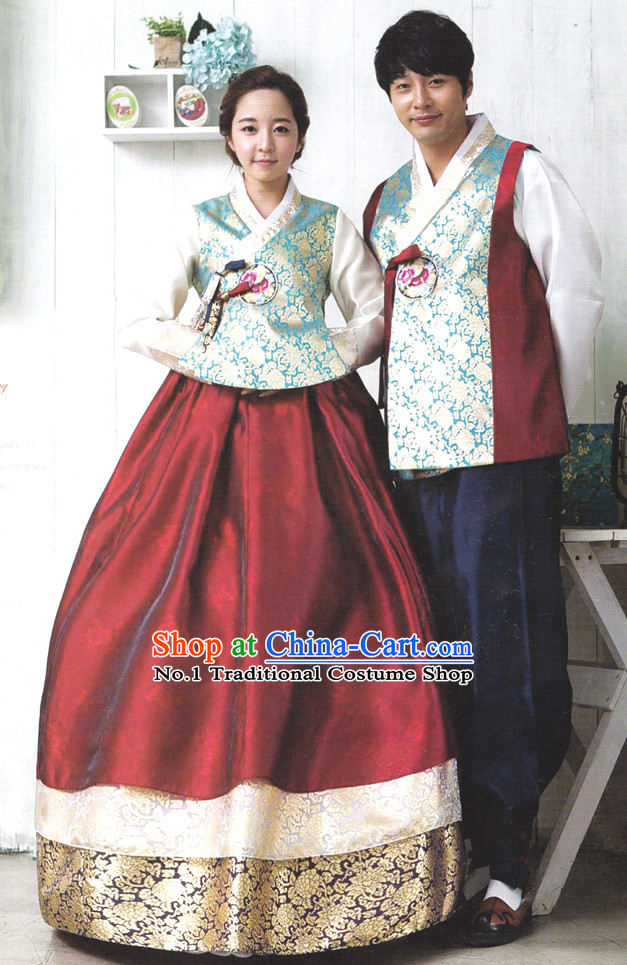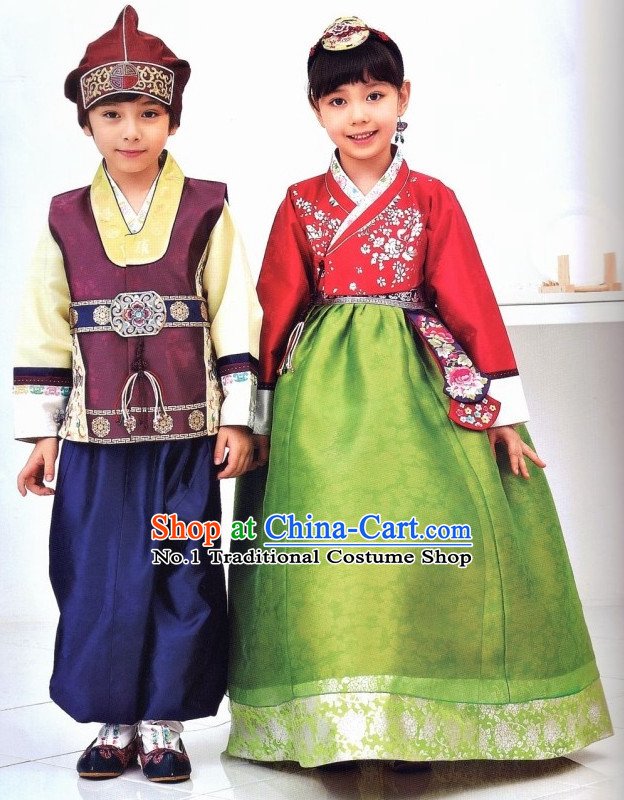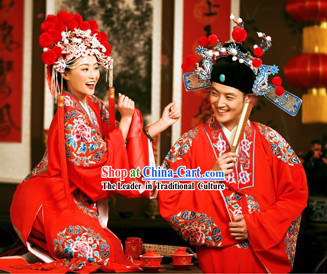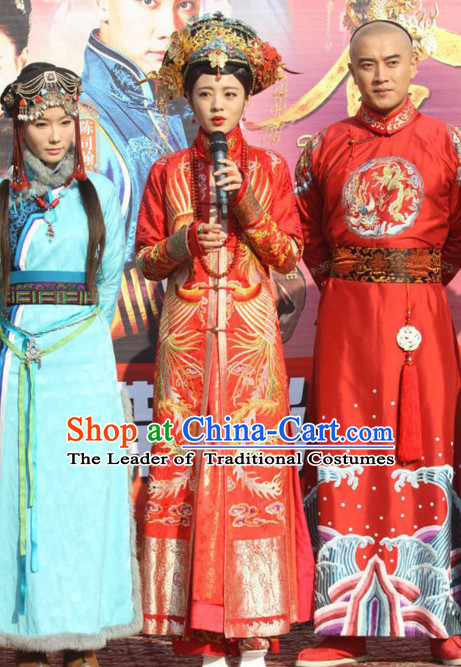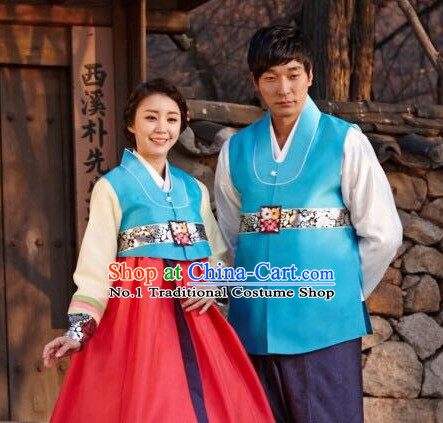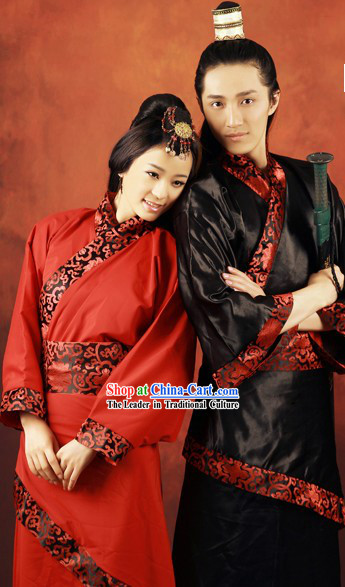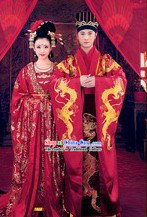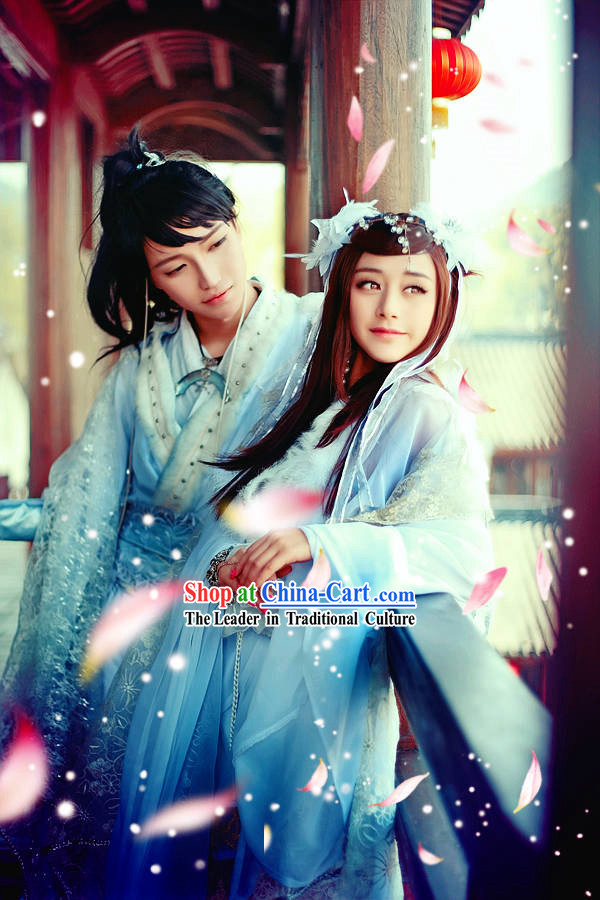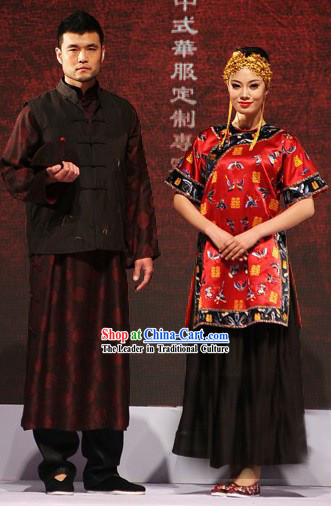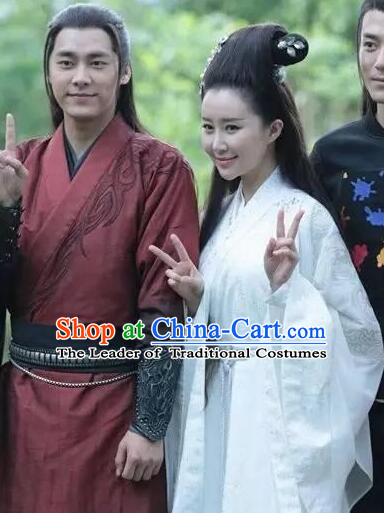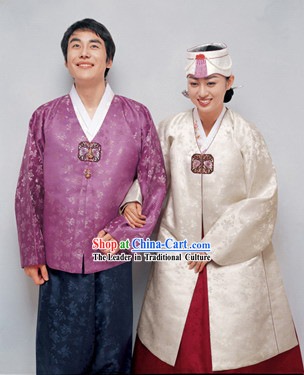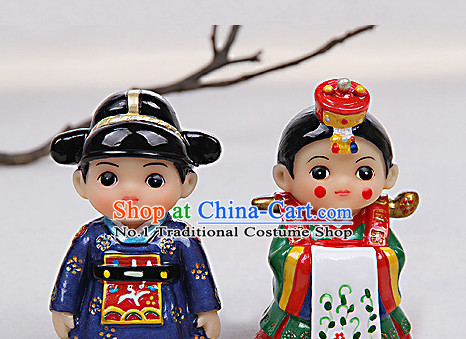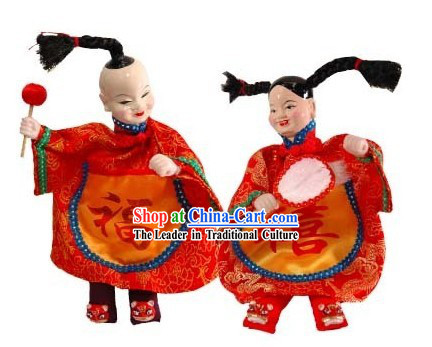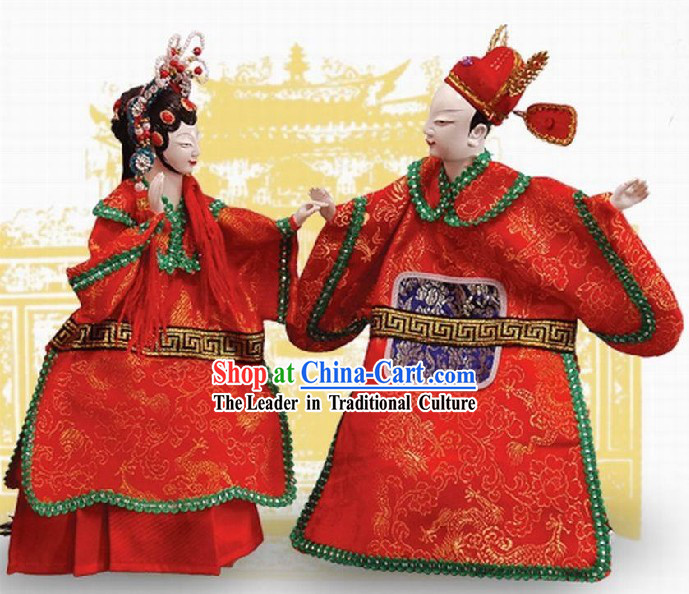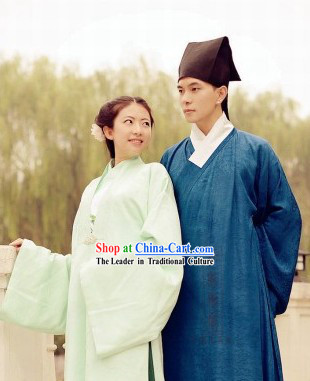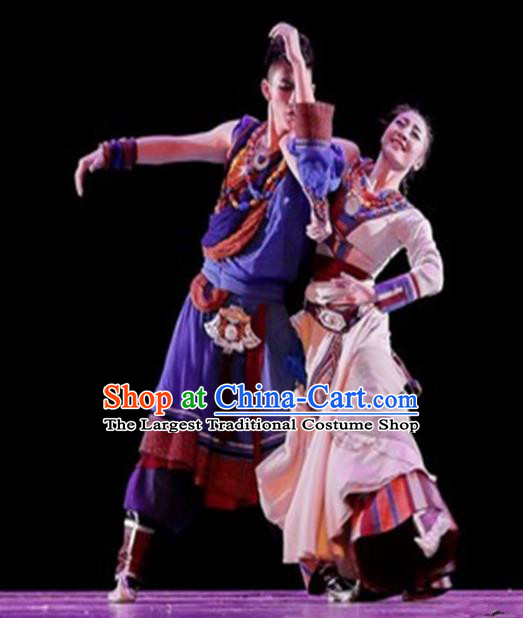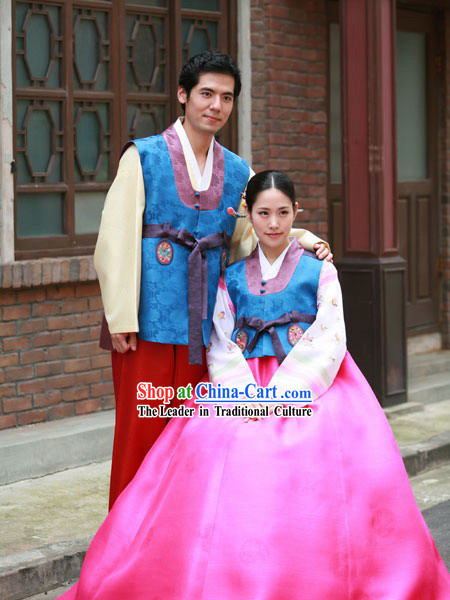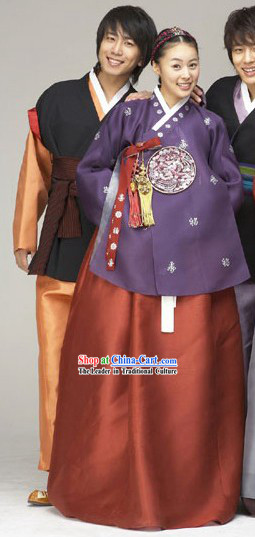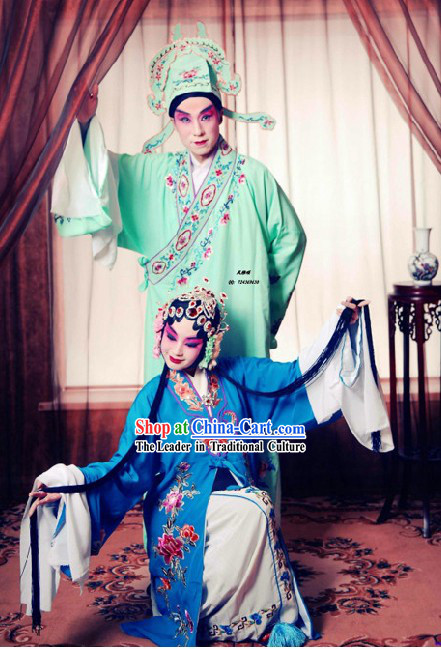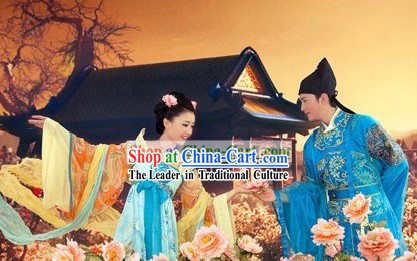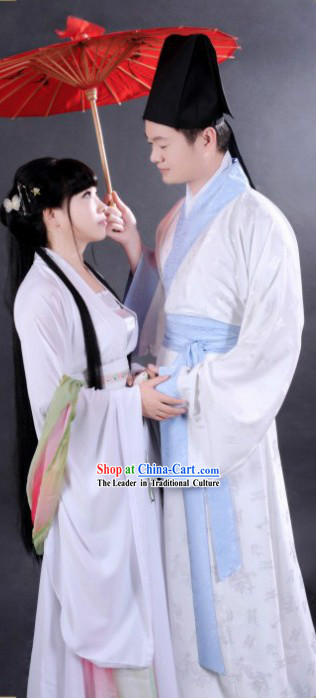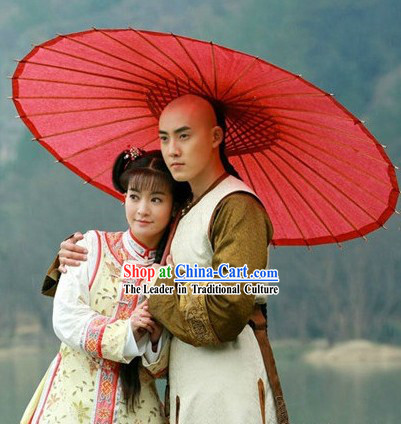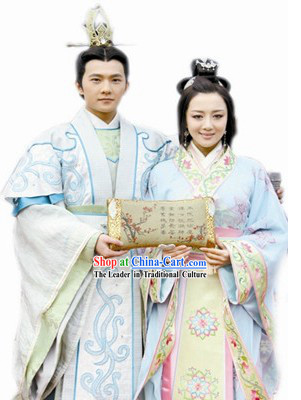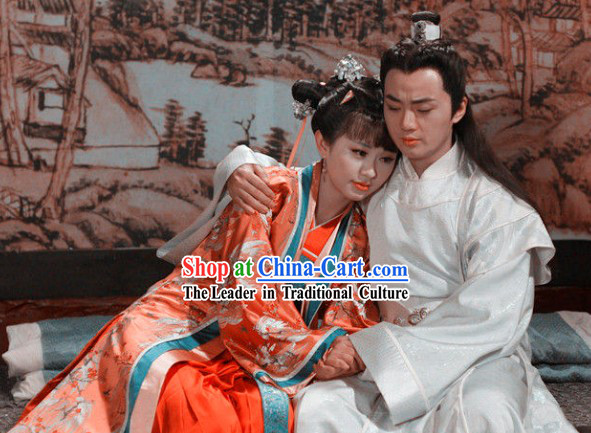
Click Related Pictures for More Audios:
Korean traditional couple's costumes consist of two sets, showcasing a unique and elegant cultural charm.
These costumes represent Korea's rich history and cultural traditions, reflecting the aesthetic concepts, values, and lifestyles of its people.
They not only have aesthetic value but also carry profound historical and symbolic significance.
The first set of costumes is a traditional Korean hanbok, consisting of a long gown, skirt, and headdress.
Hanbok is exquisitely designed with bright colors, usually made of silk or cotton fabric.
It showcases the elegance and refinement of the ancient Korean aristocracy.
The details of hanbok are meticulously crafted, such as pleats, embroidery, and decorative elements, all reflecting the designer's pursuit of beauty and respect for craftsmanship.
In addition, hanbok has certain symbolic meanings, such as color choices may be related to specific occasions or seasons.
The second set of costumes is a modern-style Korean hanbok, featuring a simpler design and fashionable elements.
This style aims to combine tradition with modernity, making hanbok more attractive and wearable.
Modern hanbok usually uses lightweight fabrics such as chiffon, silk, or cotton-linen blends.
The design focuses on comfort and practicality while retaining some traditional elements such as pleats, embroidery, and accessories.
This style of hanbok is suitable for daily wear and special occasions, providing modern Korean women with an elegant and practical choice.
In conclusion, Korean traditional couple's costumes consist of two sets that showcase Korea's diverse cultural traditions and historical heritage.
Whether it is traditional or modern hanbok, they all reflect the Korean people's love for beauty, respect for craftsmanship, and the inheritance of traditional culture.
These costumes not only have aesthetic value but also carry profound historical and symbolic significance, providing people with an opportunity to understand Korean culture.


